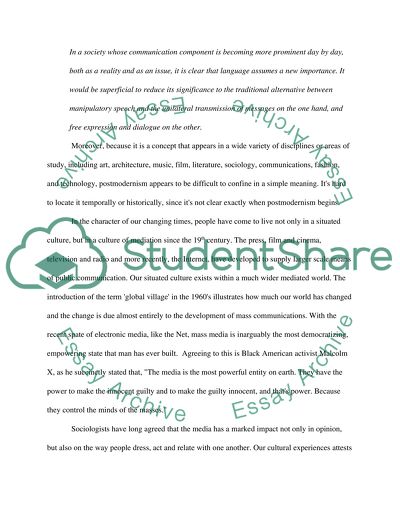Cite this document
(“The Impact of Postmodernism in the 21st Century Media Essay”, n.d.)
Retrieved from https://studentshare.org/miscellaneous/1525362-the-impact-of-postmodernism-in-the-21st-century-media
Retrieved from https://studentshare.org/miscellaneous/1525362-the-impact-of-postmodernism-in-the-21st-century-media
(The Impact of Postmodernism in the 21st Century Media Essay)
https://studentshare.org/miscellaneous/1525362-the-impact-of-postmodernism-in-the-21st-century-media.
https://studentshare.org/miscellaneous/1525362-the-impact-of-postmodernism-in-the-21st-century-media.
“The Impact of Postmodernism in the 21st Century Media Essay”, n.d. https://studentshare.org/miscellaneous/1525362-the-impact-of-postmodernism-in-the-21st-century-media.


